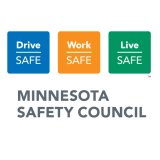Analog: Analog radios have provided a simple and easy-to-use experience for users, but as many businesses continue to evolve the need for clearer voice, expanded features and coverage have increased. With analog radios, every noise picked up by the microphone is transmitted, making it difficult for users to understand each other in noisy environments. Radio interference creates static on analog radios and makes the conversation less intelligible. Voice gets garbled and the message must be repeated, especially the closer you move to the boundaries of coverage. Also, analog radios typically allow for only one two-way conversation at a time per channel, limiting your team's ability to collaborate.
Digital: Clear communication is critical to operating efficiently and digital two-way radios offer advantages compared to analog including, clearer voice quality, increased radio capacity, better signal coverage and extended battery life. Built-in error correction capabilities maintain clear voice transmission as well as remove background noise, static and voice distoration even at the far reaches of coverage. Digital encoding aids in delivering clear voice in extreme conditions. Capacity expansion allows you to double the capacity of your existing 12.5kHz channel which can lower licensing costs. Digital radios provide up to 40% longer battery life allowing radio users the ability to communicate the entire day without recharging.


